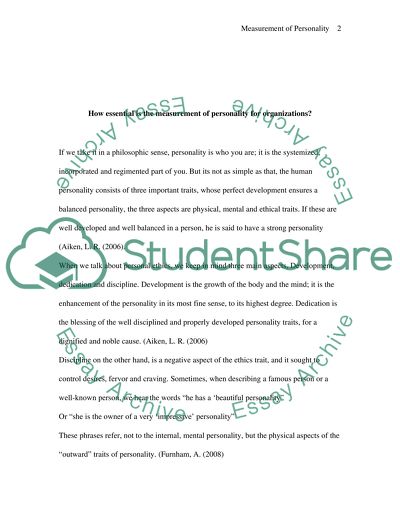Cite this document
(Measurement of Personality Essay Example | Topics and Well Written Essays - 2500 words, n.d.)
Measurement of Personality Essay Example | Topics and Well Written Essays - 2500 words. Retrieved from https://studentshare.org/human-resources/1561944-how-essential-is-the-measurement-of-personality-for-organisations
Measurement of Personality Essay Example | Topics and Well Written Essays - 2500 words. Retrieved from https://studentshare.org/human-resources/1561944-how-essential-is-the-measurement-of-personality-for-organisations
(Measurement of Personality Essay Example | Topics and Well Written Essays - 2500 Words)
Measurement of Personality Essay Example | Topics and Well Written Essays - 2500 Words. https://studentshare.org/human-resources/1561944-how-essential-is-the-measurement-of-personality-for-organisations.
Measurement of Personality Essay Example | Topics and Well Written Essays - 2500 Words. https://studentshare.org/human-resources/1561944-how-essential-is-the-measurement-of-personality-for-organisations.
“Measurement of Personality Essay Example | Topics and Well Written Essays - 2500 Words”. https://studentshare.org/human-resources/1561944-how-essential-is-the-measurement-of-personality-for-organisations.


